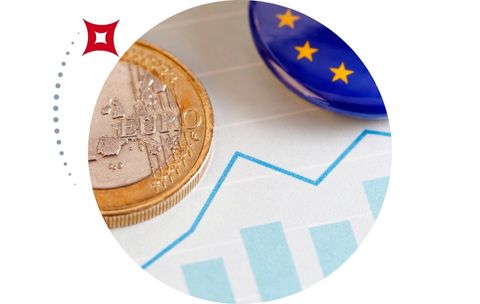What is a Stop Limit Order in Foreign Exchange?

If you’re planning to exchange money from one currency to another, you obviously want to do so at the best possible rate. However, not everyone has time to monitor the market. This is where a stop limit order can help. With one of these orders in place, you can get on with your life while waiting for the trade to happen.
Find out more about these orders and how they work in foreign exchange.
What is a stop limit order?
4 minute readIn foreign exchange, you can use different types of orders to enter a trade, limit risk exposure, and protect profits. A stop limit order is one of these orders, and it can give you more control over the amount of money you’ll get, limiting the effect that market fluctuations have on you. The crux here is that you may need to wait a while before the exchange happens, so these orders are best used when you don’t need the transaction to happen immediately.
For example, you’re looking to exchange pounds sterling (GBP) for US dollars (USD). The current market rate for GBP/USD is 1.25 (GBP 1,000 buys USD 1,250), but you have an idea that the rate may increase. With that in mind, you place a stop limit order of 1.3 (GBP 1,000 buys USD 1,300). If the market reaches your desired rate (1.3), your order will be placed automatically. There’s no knowing if and/or when the trade will happen, but at least the order means you don’t need to settle for a less-than-desirable rate or spend time monitoring the market.
The purpose of a stop limit order
To better understand what a stop limit order is, it’s helpful to take a closer look at the purpose of these orders. The main purpose of these orders is to reduce risk while you’re looking to buy currency at a better value than the current exchange rate.
These orders offer you the flexibility of precision when defining a trade’s entry or exit point, although there’s no guarantee that you will enter or exit a position. If the market doesn’t reach your desired rate, your order won’t be executed.
The difference between stop limit and loss orders
Given the popularity of the various types of orders in FX, it’s important to understand the difference between stop loss and limit orders.
It’s best to use stop limit orders when you want to purchase currency at a better value than the current exchange rate, and you believe that your required currency will experience a positive, upward trend. You can set the desired exchange rate, and if or when the market reaches that point, the exchange will be executed automatically.
Stop loss orders are the opposite of limit orders. It’s best to use these orders when you think the rate will move against you as they help to reduce your risk of exposure to currency market fluctuations and ensure that you aren’t negatively affected by exchange rates that are worse than you originally expected.
Advantages and disadvantages of a stop loss order
Familiarise yourself with the advantages and disadvantages of stop limit orders before deciding to use them in your FX trading.
The main advantages of these orders include the possibility of getting the exchange rate you want, allowing you time if you don’t need the transaction to happen immediately, the freedom of not needing to monitor the market, and the option of cancelling the order if your target rate isn’t reached.
The main disadvantages include not knowing whether your desired rate will be reached and whether the trade will be executed, limit orders expiring after three months, a limit order cap at 10% above the current market rate, and the possibility of limiting the amount of money you’ll receive from the exchange if the rate continues to increase.
Sign up for a business account with Moneycorp
While there is an element of uncertainty involved, stop limit orders are a good way to get better value when buying foreign exchange. There may be no guarantees involved, but they certainly can be helpful, especially if you don’t have the time to monitor the market. Sign up for a business account with Moneycorp and take advantage of stop limit orders and our many other FX solutions.


